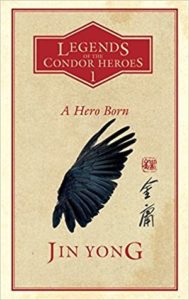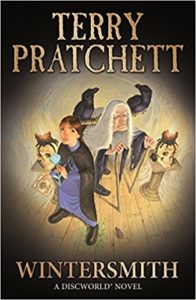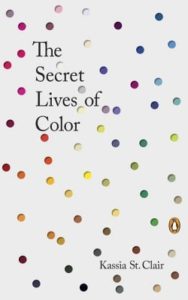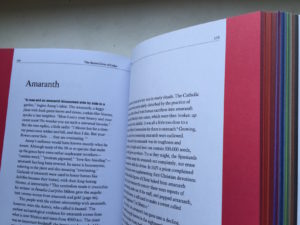It’s been quite a while since I’ve taken this long to read a book (four days, to be precise, which is a total humble brag given that I’ve read 72 books in the past 4 months and 11 days.) Granted, The Rig clocks in at over 600 pages and since I had it in paperback — the better to enjoy that gorgeous cover — it was harder to binge read in the dark as I do with ebooks on my Paperwhite before I go to sleep. But ooh, what an intelligent, layered 600+ pages! Imagine a far future where humanity has abandoned a dying Earth to colonize a system of planets far less conducive to human health and happiness. This is the setting for the interwoven tales of two men who met as boys on the fanatically religious planet of Gehenna, and a plucky writer sent to interview two other men, a cop and an engineer, on the appropriately named planet of Bleak. As we follow these narratives, pieces slowly shift and slide into place to present us with an overarching picture that is as breathtaking as that cover. Some of these pieces are more obvious than others (Pireve, the origin of the cancer) but many more are unexpected enough to make even the most seen-it-all readers stop and say “Oh.”
At its heart, The Rig is a novel about faith that, in my opinion, does a much better job of looking for the divine in the stars of the future than most of the overtly religious science fiction out there. I really, really loved the ending even as I wanted much, much more from the climactic scene on the titular Rig. A lot of that has to do with The Question, which I think is at once an elegant concept and one that needs more explaining than Roger Levy gives us in this novel. Granted, it is entirely likely that this was done on purpose, to provoke readers to form their own thoughts regarding the issue (and if I get a chance to interview the author, hopefully, we’ll find out more!) But don’t mistake The Rig for a pious novel. The social media system known as AfterLife, which gives its subscribers a shot at resurrection via the votes of other subscribers, is presented as a completely viable alternative to goddery, as the holdover religions from Earth are known. The Rig thoughtfully explores the need for and forms of faith through fiction that is part space opera, part noir novel (I’m still mad about Delta) without ever sermonizing. It raises terrific questions of power, technology and omniscience in an atmosphere as perpetually unstable as a rig floating on a turbulent sea.
I also loved Mr Levy’s way with linguistic evolution, with the aforementioned “goddery” as just one example. “Putery” was the one awkward extrapolation, I felt, but I really appreciated the use of words like “threedy” and “flycykcle” that perfectly captured the way technological advances come to be just another part of language. And, of course, I am a sucker for a good, intelligent pun, with which The Rig is perfectly peppered.
Recommended if you want thought-provoking scifi that acknowledges human frailty while celebrating our resilience. I do hope he writes more on The Question (or perhaps the subject is explored in his previous books and I should go read those!)





